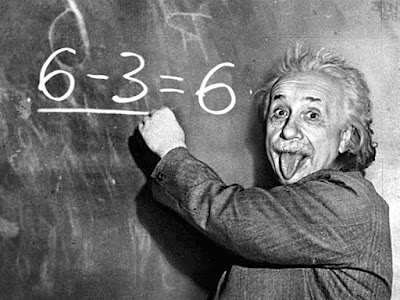>6-3=6 ????????????PROVED BY EINSTEINS...@
A light source emits six pulses each second - the distance between the pulses is, accordingly, D = 50000 km. For a stationary (with respect to the source) observer the frequency and the speed of the pulses are:
f = 6 ; c = 6D
Then the observer starts moving at (1/2)c = 3D away from the source. According to special relativity, the frequency and the speed of the pulses relative to the moving observer change as follows:
f' = 6 - 3 = 3 ; c' = 6D - 3D = (6 - 3)D = 6D
The calculation:
6 - 3 = 6
that Einsteinians apply to the speed of light but to nothing else in Divine Albert's world is the essence of special relativity:
----------------------------------------------------------------------------------------------------------------------------------
Psychotria Elata aka Hooker’s Lips: Latin America’s Kissable Flower.
Flowers aren’t always pretty and they can be quite shocking too — in a good or bad way. There are the boring and the colorful flowers, plus the ones that don’t look acceptable at all, just like when you see the uninviting smiles of a Venus Flytrap.
But there’s a flower that’ll be nice enough to meet you or maybe kiss you with its luscious red lips. These lips belong to a plant with the scientific name Psychotria Elata, or commonly known as the Hooker’s lips. Yes, you’ve read it right. These aren’t from Angelina Jolie nor Mick Jagger, but from a plant that belongs to the 2000 species of the Psychotria genus plants which are the flowering plants of the Rubiaceae family. This genus is even known to produce psychedelic chemicals likedimethyltryptamine. It’s funny to know that this plant contains something psychedelic that it matches its seductive look.
In a galaxy four billion light-years away, three supermassive black holes are locked in a whirling embrace. It’s the tightest trio of black holes known to date and even suggests that these closely packed systems are more common than previously thought.
“What remains extraordinary to me is that these black holes, which are at the very extreme of Einstein’s Theory of General Relativity, are orbiting one another at 300 times the speed of sound on Earth,” said lead author Roger Deane from the University of Cape Town in a press release.
“Not only that, but using the combined signals from radio telescopes on four continents we are able to observe this exotic system one third of the way across the Universe. It gives me great excitement as this is just scratching the surface of a long list of discoveries that will be made possible with the Square Kilometer Array.”
The system, dubbed SDSS J150243.091111557.3, was first identified as a quasar— a supermassive black hole at the center of a galaxy, which is rapidly accreting material and shining brightly — four years ago. But its spectrum was slightly wacky with its doubly ionized oxygen emission line [OIII] split into two peaks instead of one.
A favorable explanation suggested there were two active supermassive black holes hiding in the galaxy’s core.
An active galaxy typically shows single-peaked narrow emission lines, which stem from a surrounding region of ionized gas, Deane told Universe Today. The fact that this active galaxy shows double-peaked emission lines, suggests there are two surrounding regions of ionized gas and therefore two active supermassive black holes.
But one of the supermassive black holes was enshrouded in dust. So Deane and colleagues dug a little further. They used a technique called Very Long Baseline Interferometry (VLBI), which is a means of linking telescopes together, combining signals separated by up to 10,000 km to see detail 50 times greater than the Hubble Space Telescope.
--------------------------------------------------------------------------------------------------------------------------
Are there more water molecules in a full glass of water or more "glasses of water" in the world's oceans
The volume of water in the world's oceans is estimated at 1.3 billion cubic kilometers of water (multiple sources: Volume of Earth's Oceans. This can also be easily estimated with depth and area considerations). A cubic kilometer contains a billion cubic meters, and a cubic meter is 1,000 liters, and a glass of water is about 1/4 of a liter, so the number of glasses of water in the ocean is roughly
This is much less than the number of molecules in a glass of water. There's an Avogadro number (
------------------------------------------------------------------------------------------------------------
CANS OF DIET COKE FLOAT BUT CANS OF REGULAR COKE DON’T

In any event, initially, this floating problem seems like something that breaks physics because both cans are the exact same size and contain exactly the same amount of liquid. Of course, anyone who’s ever taken a physics class at some point probably knows what makes a given object float in the first place, in the simplest possible sense, is that an object will float provided it displaces an amount of liquid (or sufficiently dense gas) that weighs more than itself.
As you may recall, one of the earliest known scientific uses of density was by the ancient Greek mathematician and all round nerd, Archimedes when the king of Syracuse supposedly asked him to determine whether or not his crown was made from the same bar of pure gold he’d originally given his jeweler. The king suspected that the jeweler had pocketed some of the gold he’d been given, replacing it with silver, but couldn’t prove it without melting down his crown and physically comparing it to another block of gold the same size as the original, which wasn’t an option the king was going to consider.





No comments:
Post a Comment